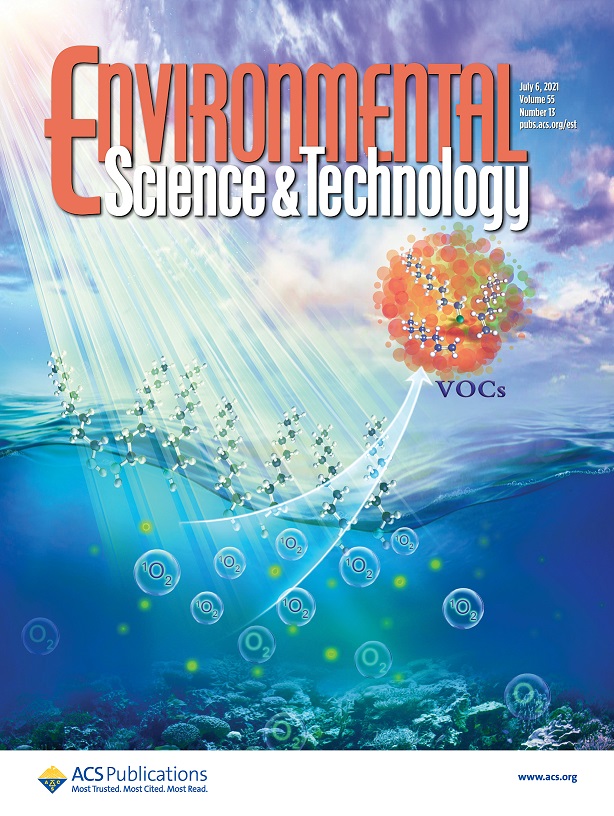As an important precursor of PM2.5, volatile organic compounds (VOCs) have received extensive attention from scholars. Surfactants (such as fatty alcohols) have widespread use in all fields of industry and are widely present on the surface of oceans and other water bodies. Recently, surfactants have been verified to generate VOCs under sunlight at the air-water interface.
A research team led by Prof. CAO Hongbin from the Institute of Process Engineering (IPE) of the Chinese Academy of Sciences investigated the photoreaction of 1-nonanol (NOL) as a model surfactant at the air-water interface, especially for the important role of singlet oxygen (1O2) in the formation of VOCs.
This work was published in Environmental Science & Technology on May 9 (DOI: 10.1021/acs.est.1c00313).
Researchers used an online gas chromatography equipped with mass spectrometry and flame ionization detector (GC-MS/FID) to real-time monitor and quantitative analyze the production of VOCs.
Furthermore, density functional theory (DFT) calculations were used to provide theoretical explanation for the photochemical reaction at the molecular level.
Studies have found that 1O2 is first produced by photosensitization with the presence of photosensitizers (here, nonanal contained in NOL analytical reagent is taken as an example).
Second, 1O2 possibly abstract two H atoms from the α-carbon of NOL and further formed newly-generated NAL and the by-product H2O2.
Finally, newly-generated NAL produces heptene and other VOCs under photoirradiation through Norrish type II process.
On one hand, newly-generated NAL accelerates the production of 1O2. On the other hand, 1O2 may initiate the conversion of NOL to newly-generated NAL, which makes the whole reaction a closed cycle. As a result, the whole photoreaction of NOL is strengthened.
Researchers from IPE have made certain studies on photochemical conversion mechanism of surfactants at air-water interface in their previous work (Green Chemistry 2020, 22, 7848-7857; Chemical Communications 2019, 55, 596-599; Macromolecular Rapid Communications 2018, 39, 1800152; ACS Applied Nano Materials 2019, 2, 3404–3413).
This work has found a unique point that reactive oxygen species (ROS), especially 1O2, plays a crucial role than photosensitizers in VOCs formation at the air-water interface.
“Photoactive compounds, such as humic substances, amino acids, aromatic carbonyls, chlorophyll, Fe3+ species and so on, are widely present in aqueous environments, just trace amounts may photosensitize molecular oxygen to generate 1O2,” said ZHAO He from IPE, “This research provides a new perspective for VOCs production through interfacial photochemical reactions, which is of great significance.”

Schematic diagram of the photoreaction of NOL at the air-water interface. (Supplementary journal cover, image by ZHAO He)
Media Contact:
LI Xiangyu
Public Information Officer
Institute of Process Engineering, Chinese Academy of Sciences, Beijing 100190, P. R. China.
E-mail: xiangyuli@ipe.ac.cn
Tel: 86-10-82544826
 Search
Search




 京公网安备110402500047号
京公网安备110402500047号